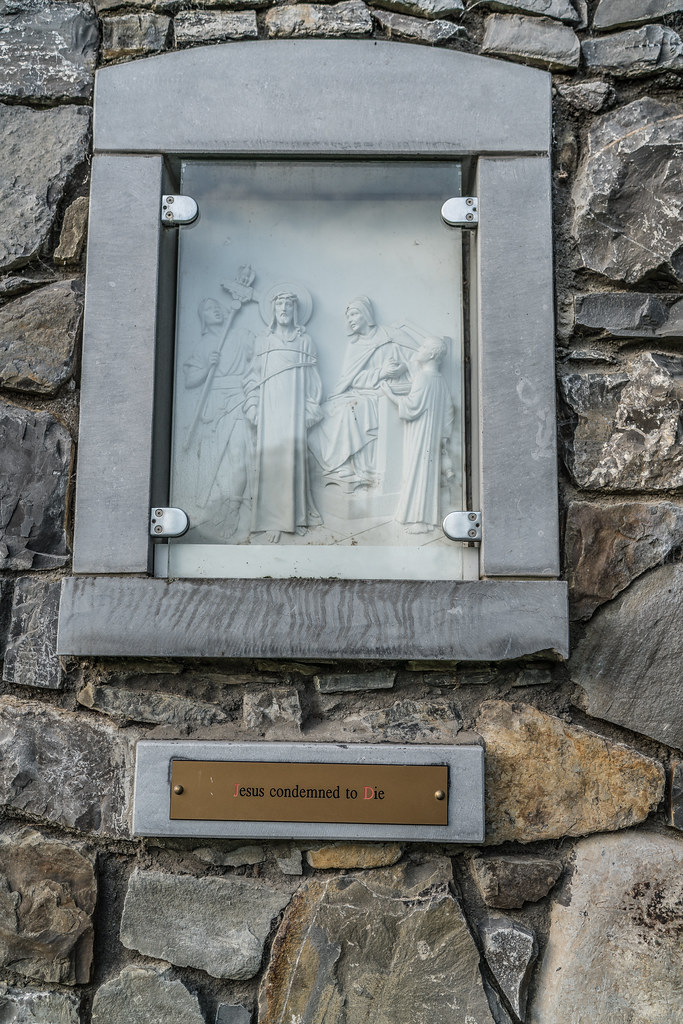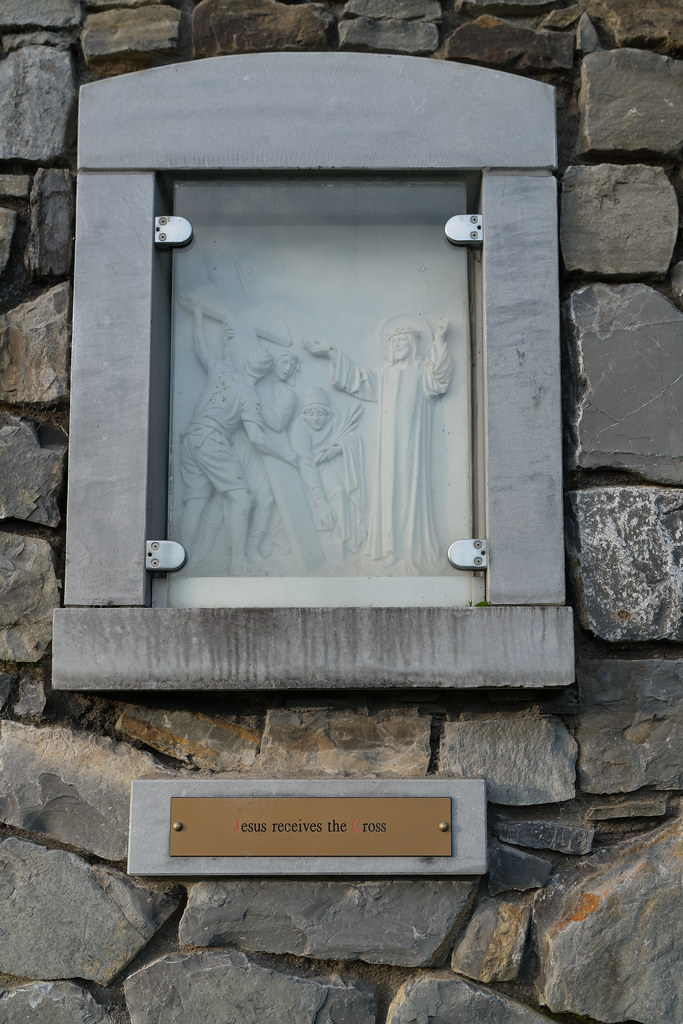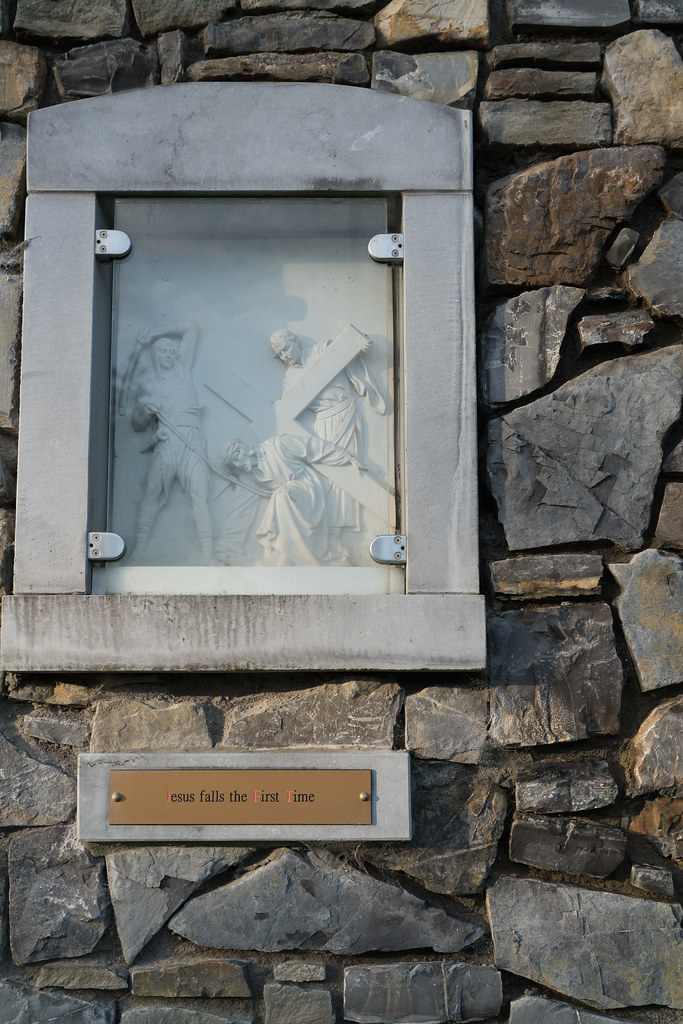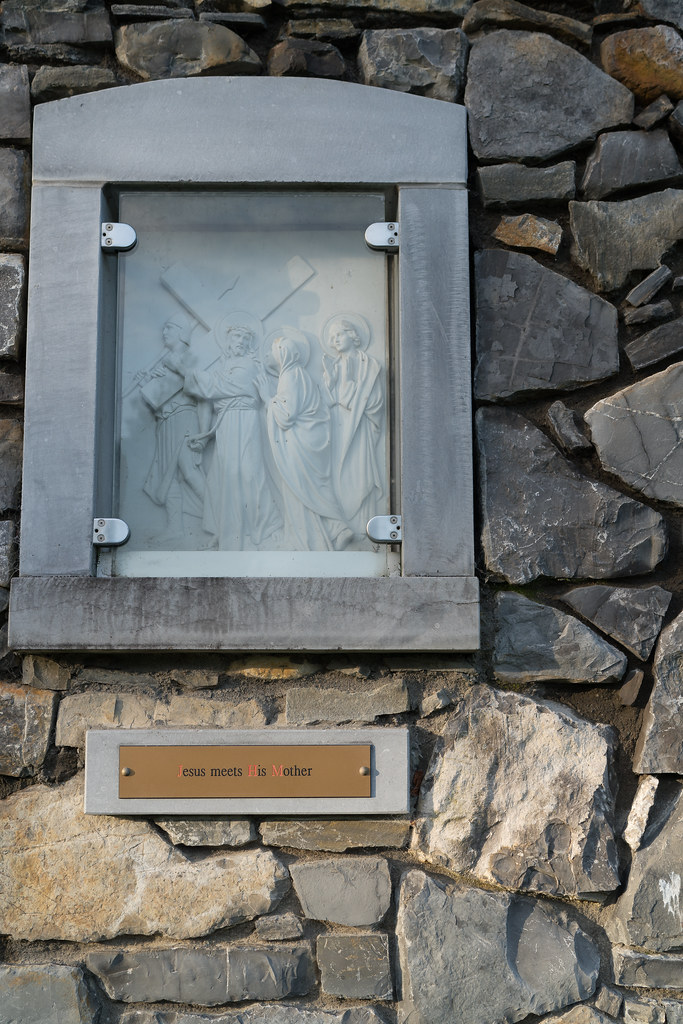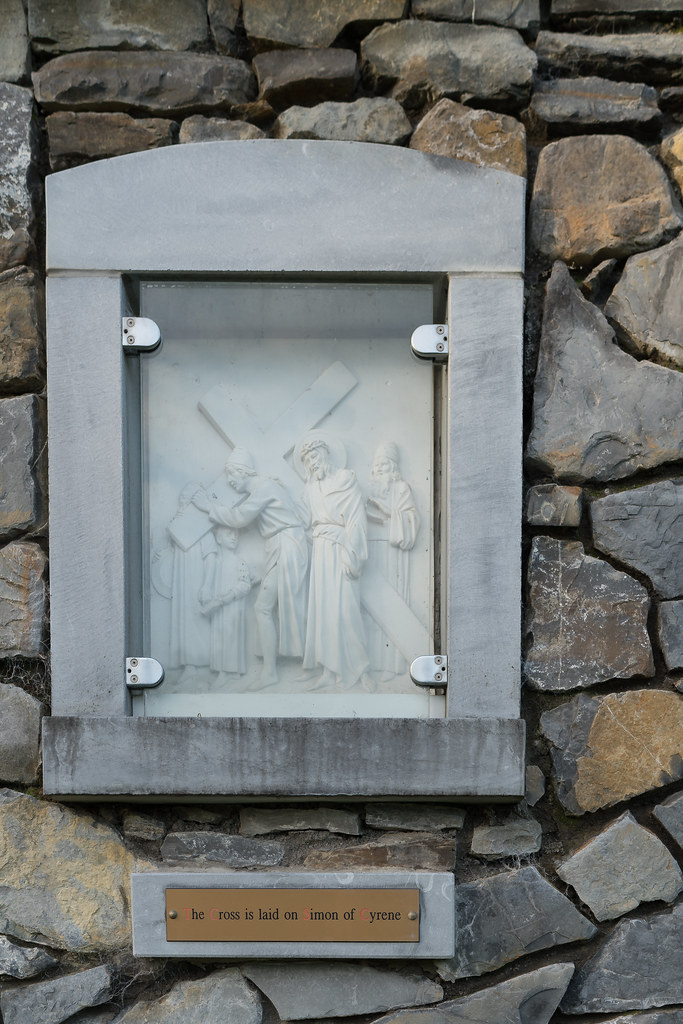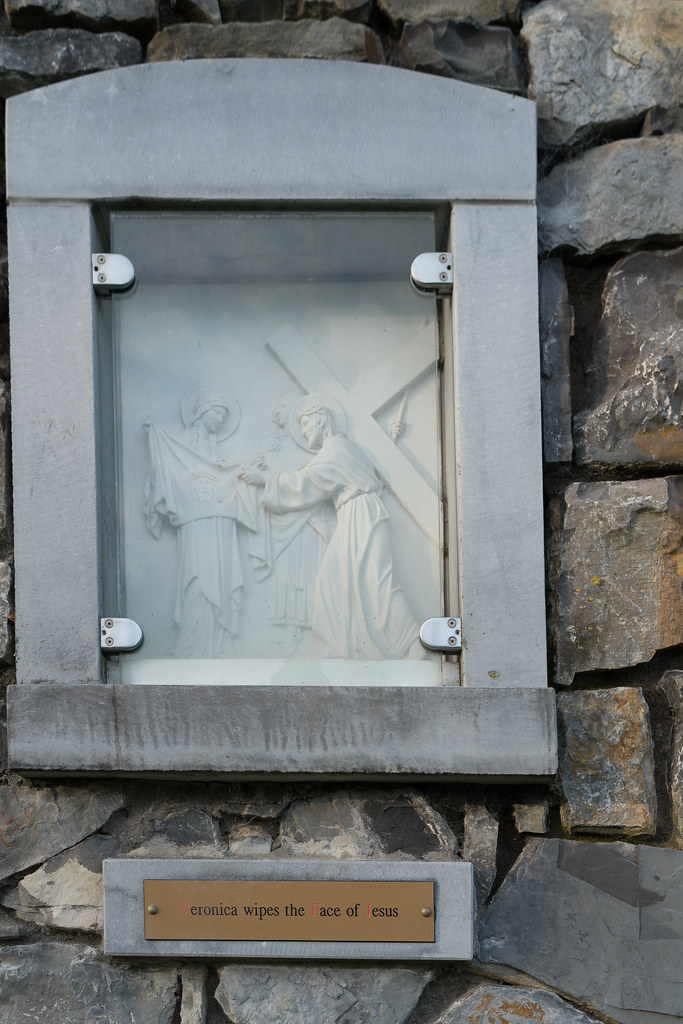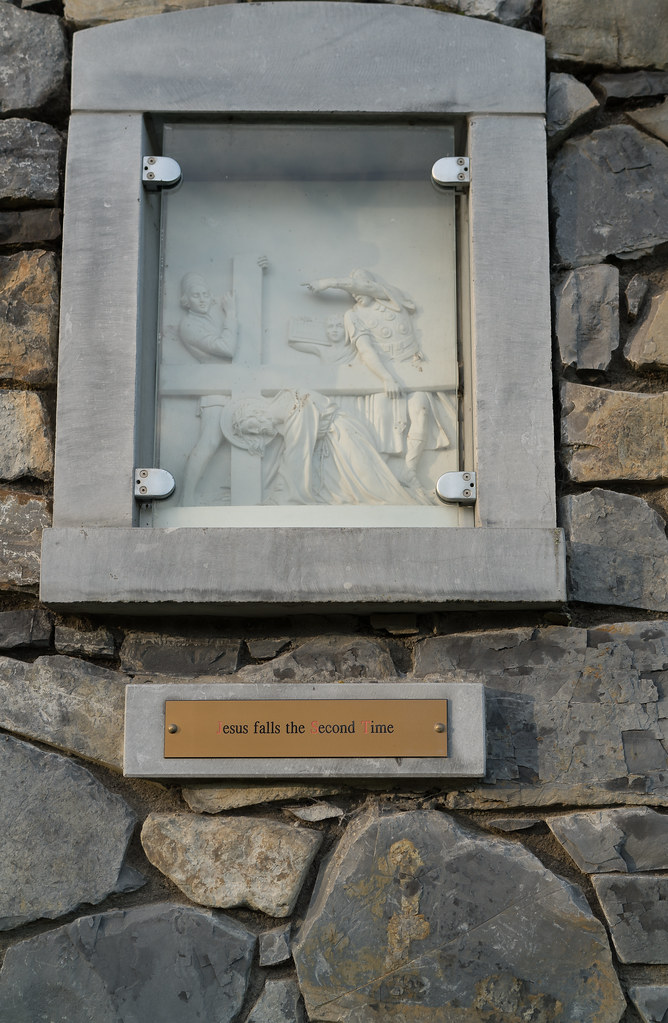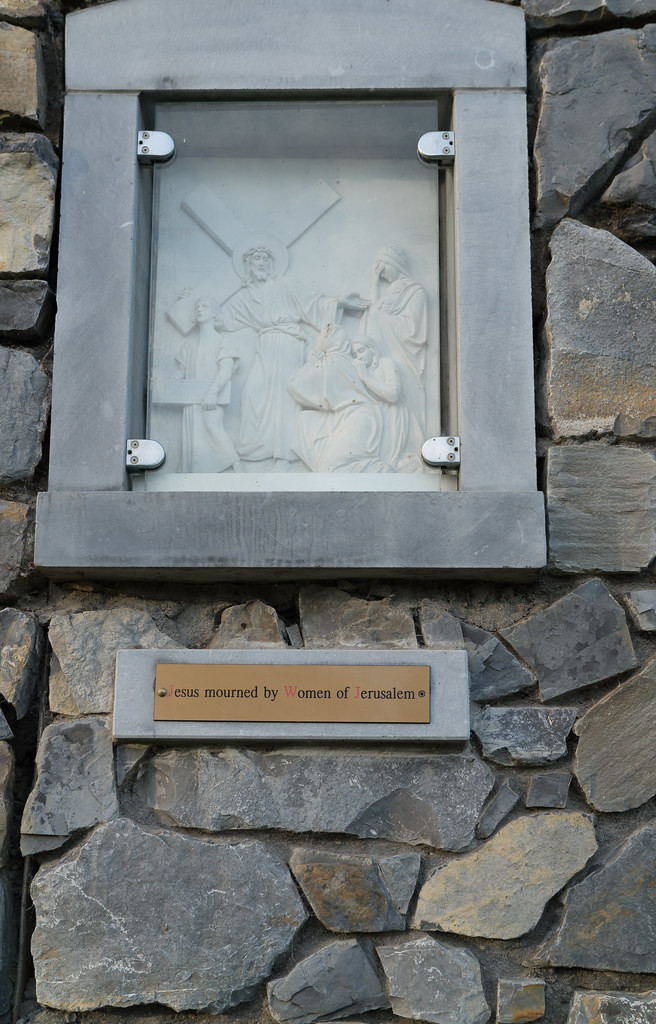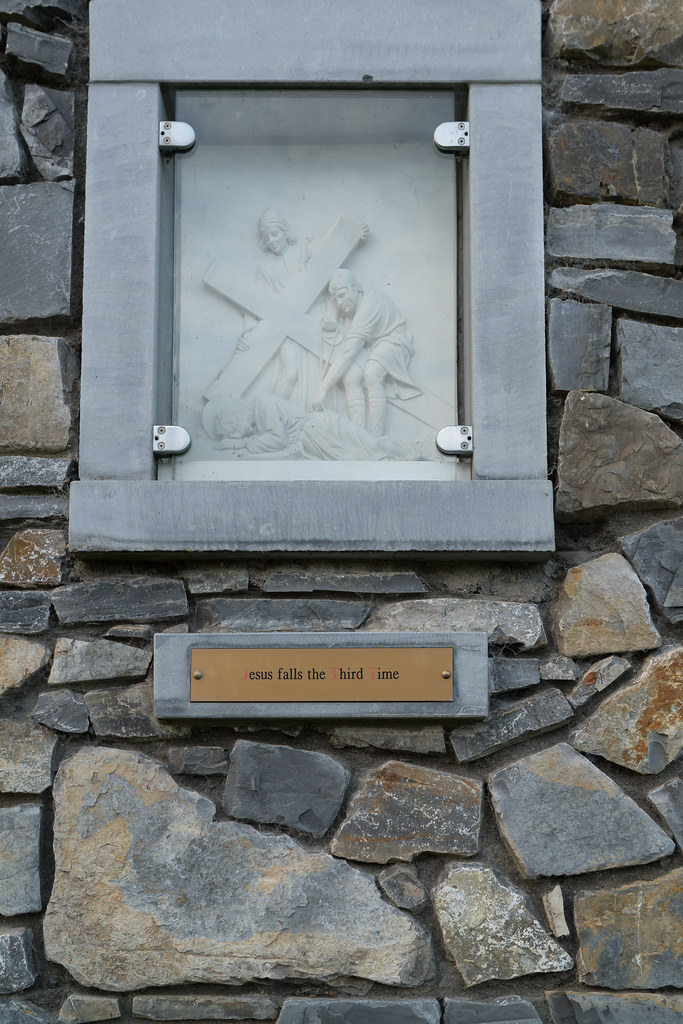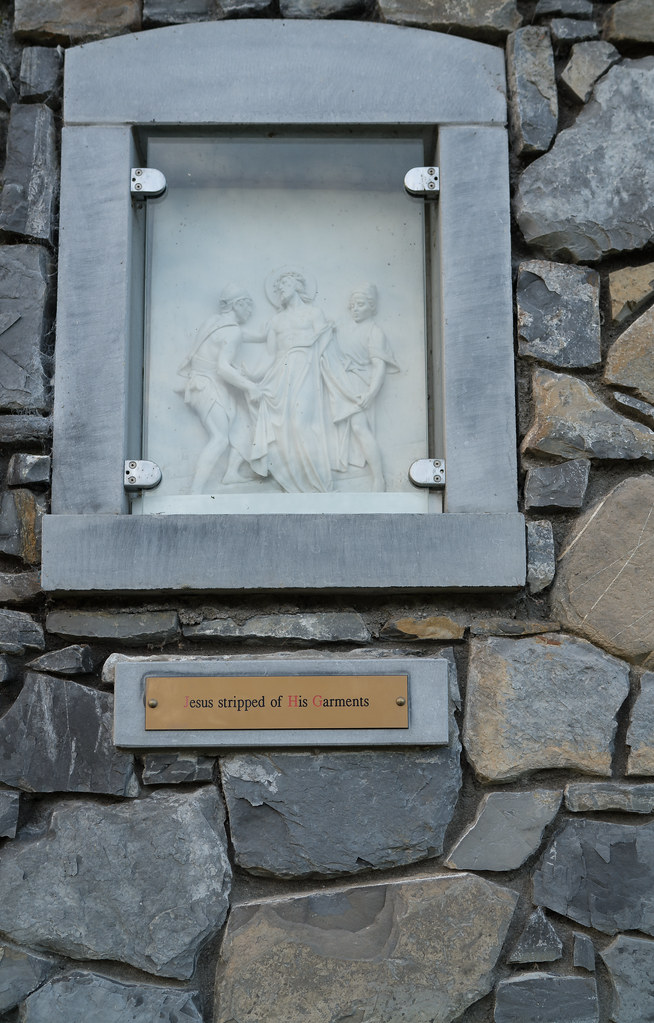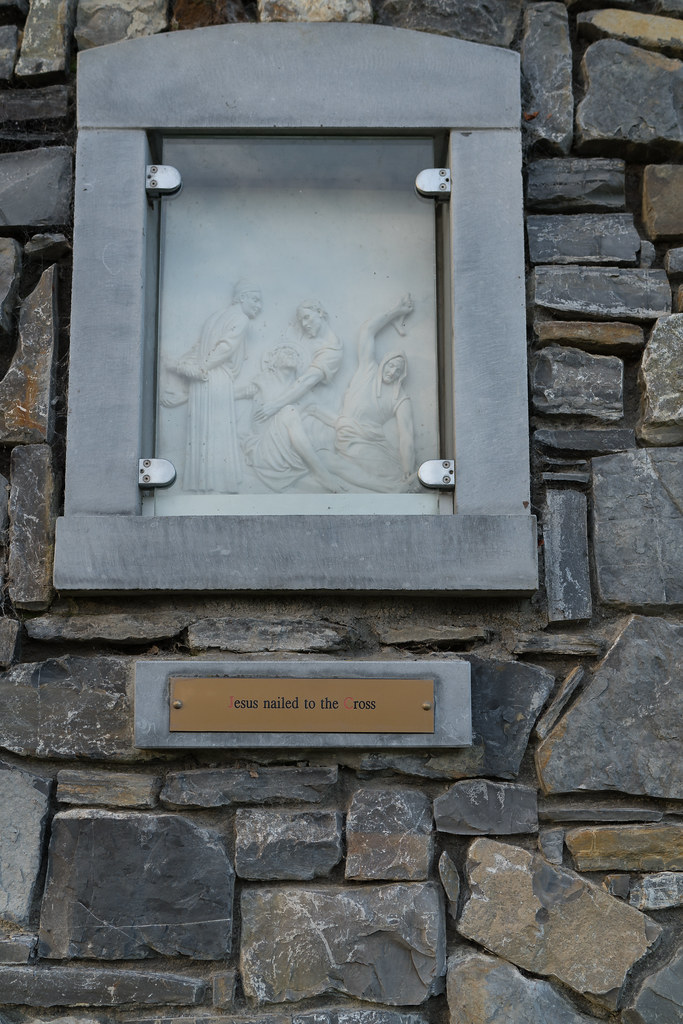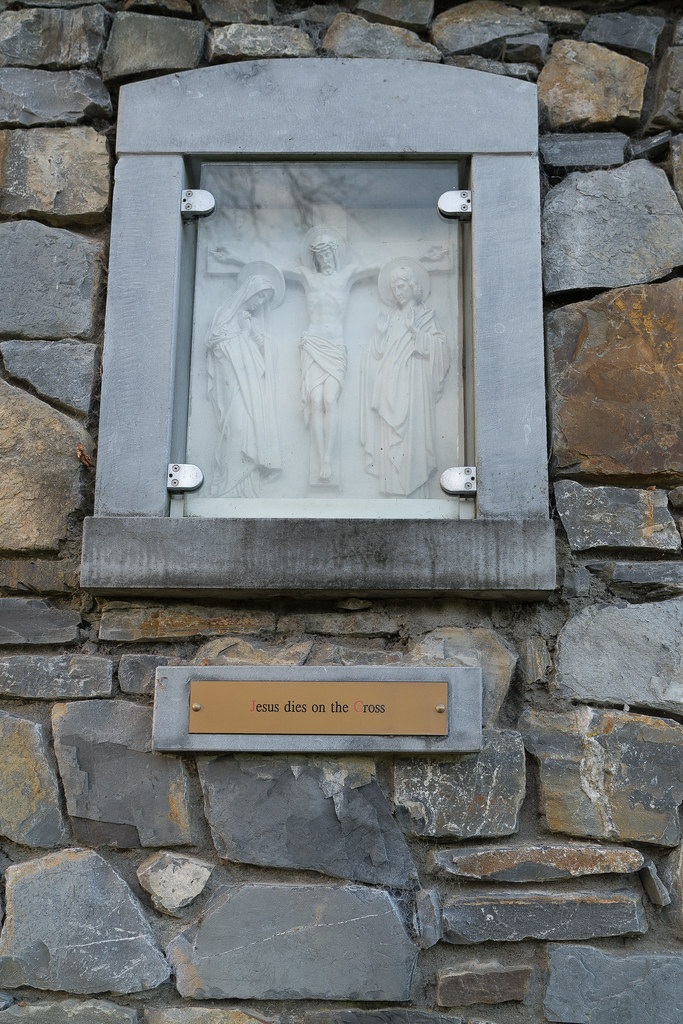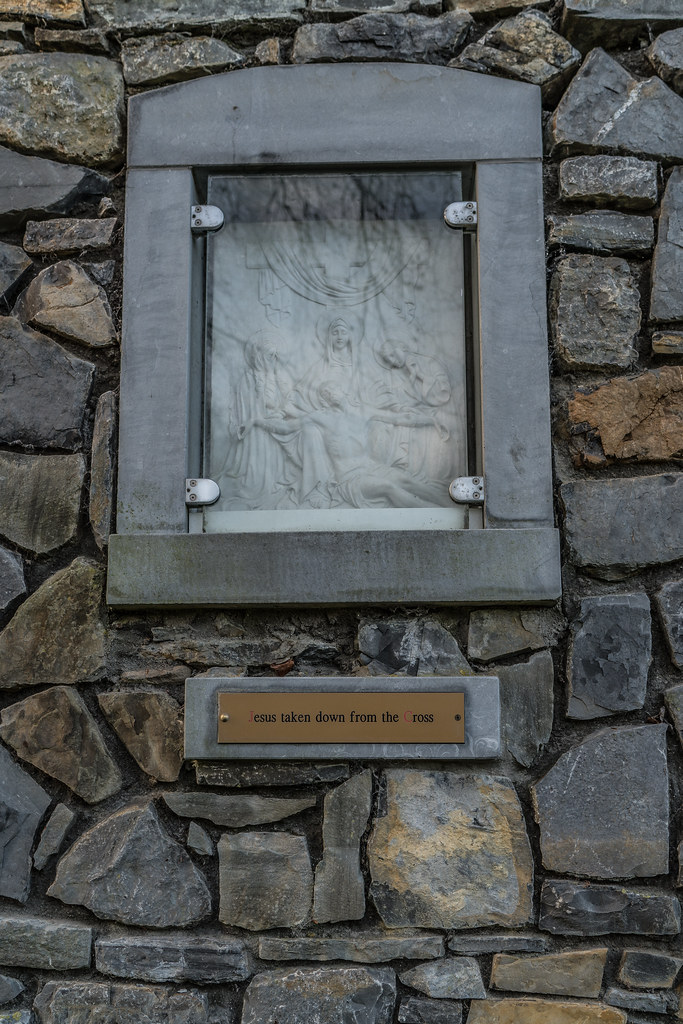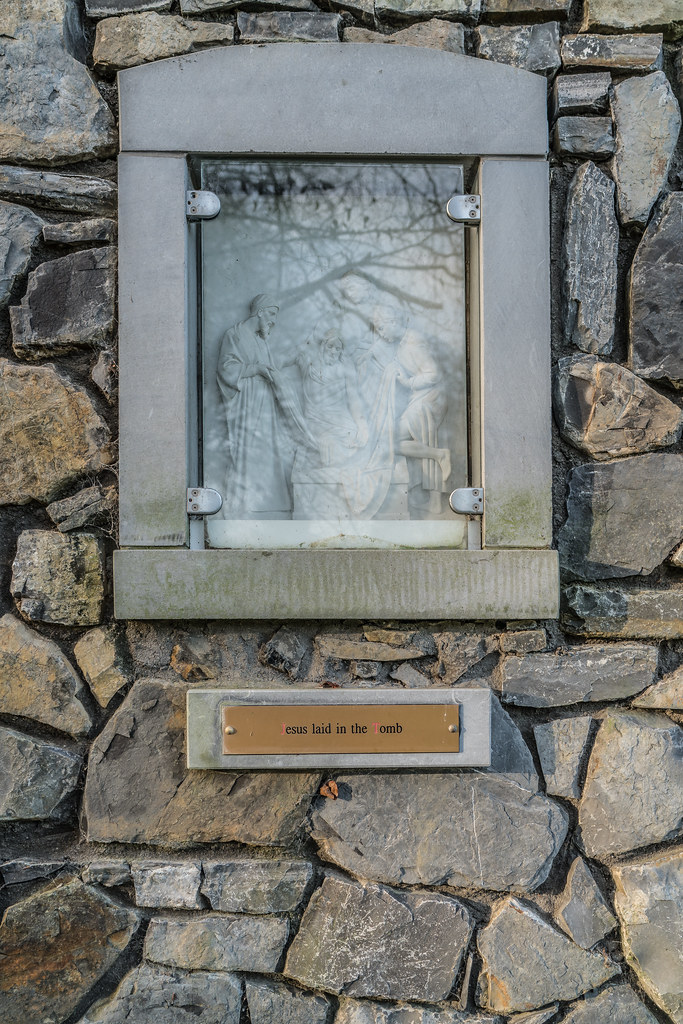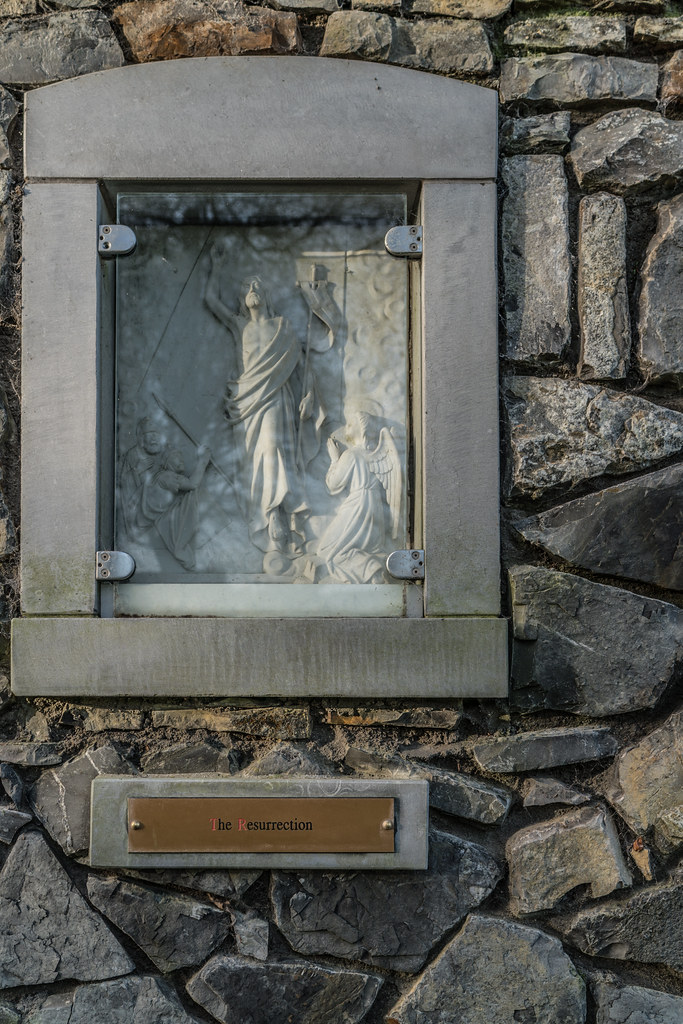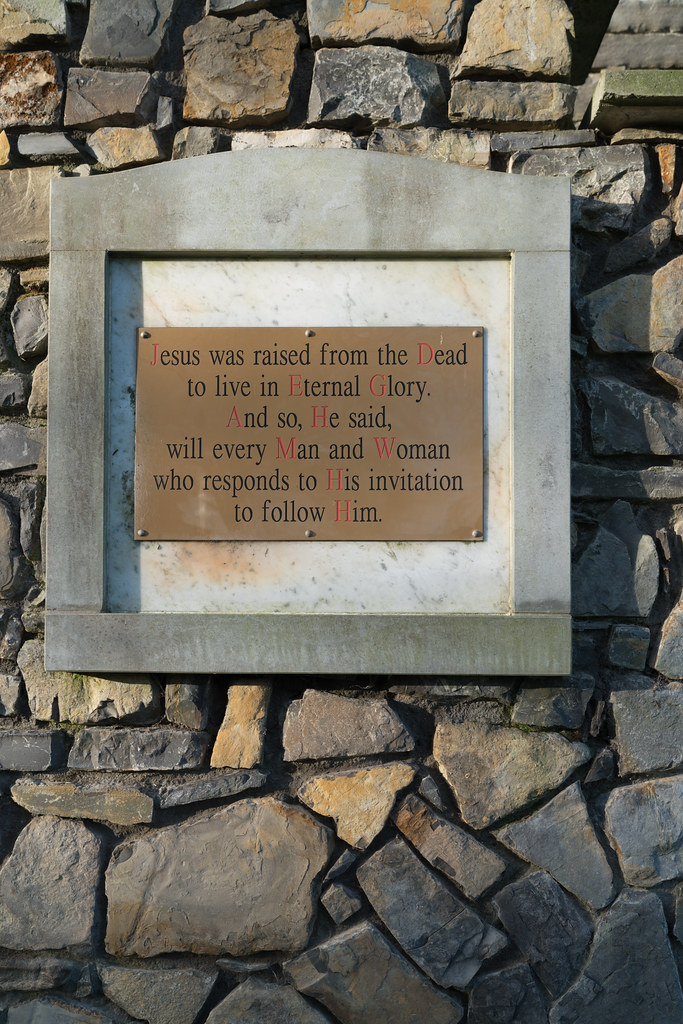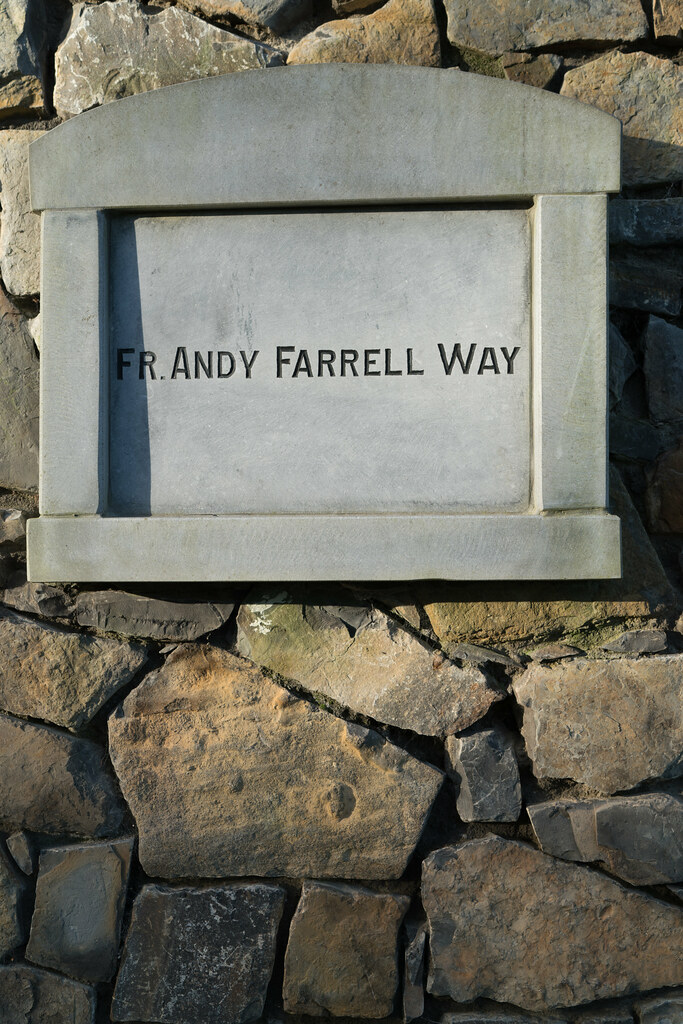STATIONS OF THE CROSS
My understanding is that when Trim Castle Hotel was constructed it was necessary to replace a wall partly owned by the church so as compensation the builders undertook to provide the ’stations of the cross’ shown in my photographs.
Because of uneven ground and the location of some trees it can be difficult to properly photograph all of the stations without introducing some distortion. This is, in fact, my third attempt.
If you are not Christian and even then the ’Stations Of The Cross’ may be a bit of a mystery to you.
I should mention that when I was young there were fourteen stations … 7 on each side of the church. When I first photographed the stations in Trim I was more than confused to discover that there were fifteen with the additional one being the Resurrection of Jesus. Further investigation resulted in the following explanation - “Some modern liturgists say the traditional Stations of the Cross are incomplete without a final scene depicting the empty tomb and/or the resurrection of Jesus, because Jesus' rising from the dead was an integral part of his salvific work on Earth. Advocates of the traditional form of the Stations ending with the body of Jesus being placed in the tomb say the Stations are intended as a meditation on the atoning death of Jesus, and not as a complete picture of his life, death, and resurrection”.
Stations of the Cross or the Way of the Cross, also known as Way of Sorrows or Via Crucis, refers to a series of images depicting Jesus Christ on the day of his crucifixion and accompanying prayers. The stations grew out of imitations of Via Dolorosa in Jerusalem which is believed to be the actual path Jesus walked to Mount Calvary. The object of the stations is to help the Christian faithful to make a spiritual pilgrimage through contemplation of the Passion of Christ. It has become one of the most popular devotions and the stations can be found in the churches of many Western Christian denominations, including Anglican, Catholic, Lutheran, Methodist and Western Orthodox parishes.
Commonly, a series of 14 images will be arranged in numbered order along a path and the faithful travel from image to image, in order, stopping at each "station to say the selected prayers and reflections. This will be done individually or in a procession most commonly during Lent, especially on Good Friday, in a spirit of reparation for the sufferings and insults that Jesus endured during his passion.
The style, form, and placement of the stations vary widely. The typical stations are small plaques with reliefs or paintings placed around a church nave. Modern minimalist stations can be simple crosses with a numeral in the centre. Occasionally the faithful might say the stations of the cross without there being any image, such as when the pope leads the stations of the cross around the Colosseum in Rome on Good Friday. The older stations can be an outdoor series of chapels in a landscape, known as a Calvary, and are sites of pilgrimage in their own right. Examples include Sacro Monte Calvario in Italy, Kalwaria Zebrzydowska in Poland, Žemaičių Kalvarija in Lithuania.
Because of uneven ground and the location of some trees it can be difficult to properly photograph all of the stations without introducing some distortion. This is, in fact, my third attempt.
If you are not Christian and even then the ’Stations Of The Cross’ may be a bit of a mystery to you.
I should mention that when I was young there were fourteen stations … 7 on each side of the church. When I first photographed the stations in Trim I was more than confused to discover that there were fifteen with the additional one being the Resurrection of Jesus. Further investigation resulted in the following explanation - “Some modern liturgists say the traditional Stations of the Cross are incomplete without a final scene depicting the empty tomb and/or the resurrection of Jesus, because Jesus' rising from the dead was an integral part of his salvific work on Earth. Advocates of the traditional form of the Stations ending with the body of Jesus being placed in the tomb say the Stations are intended as a meditation on the atoning death of Jesus, and not as a complete picture of his life, death, and resurrection”.
Stations of the Cross or the Way of the Cross, also known as Way of Sorrows or Via Crucis, refers to a series of images depicting Jesus Christ on the day of his crucifixion and accompanying prayers. The stations grew out of imitations of Via Dolorosa in Jerusalem which is believed to be the actual path Jesus walked to Mount Calvary. The object of the stations is to help the Christian faithful to make a spiritual pilgrimage through contemplation of the Passion of Christ. It has become one of the most popular devotions and the stations can be found in the churches of many Western Christian denominations, including Anglican, Catholic, Lutheran, Methodist and Western Orthodox parishes.
Commonly, a series of 14 images will be arranged in numbered order along a path and the faithful travel from image to image, in order, stopping at each "station to say the selected prayers and reflections. This will be done individually or in a procession most commonly during Lent, especially on Good Friday, in a spirit of reparation for the sufferings and insults that Jesus endured during his passion.
The style, form, and placement of the stations vary widely. The typical stations are small plaques with reliefs or paintings placed around a church nave. Modern minimalist stations can be simple crosses with a numeral in the centre. Occasionally the faithful might say the stations of the cross without there being any image, such as when the pope leads the stations of the cross around the Colosseum in Rome on Good Friday. The older stations can be an outdoor series of chapels in a landscape, known as a Calvary, and are sites of pilgrimage in their own right. Examples include Sacro Monte Calvario in Italy, Kalwaria Zebrzydowska in Poland, Žemaičių Kalvarija in Lithuania.
SORRY FOR THE DELAY

